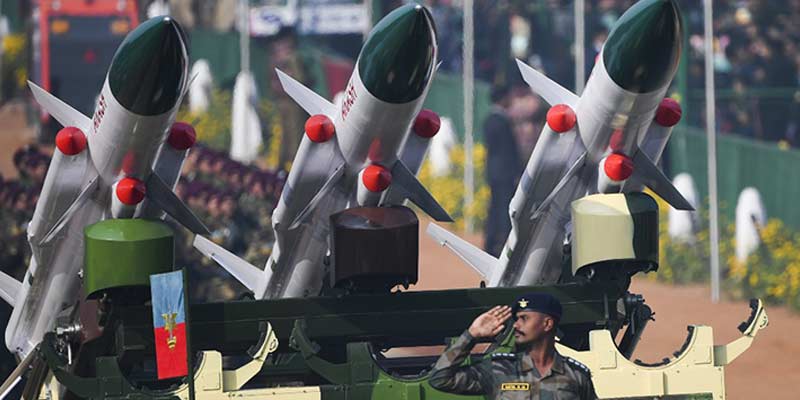- India
- Feb 03
Defence budget sees a modest increase
In a marginal hike, the defence budget was increased to Rs 3.37 lakh crore for 2020-21 as against last year’s Rs 3.18 lakh crore, notwithstanding expectations of a significantly higher allocation to fast-track long-pending military modernisation.
Out of the total allocation, Rs 1.13 lakh crore has been set aside for capital outlay to purchase new weapons, aircraft, warships and other military hardware, according to the Union Budget presented in the Lok Sabha by Finance Minister Nirmala Sitharaman.
The revenue expenditure, which includes expenses on payment of salaries and maintenance of establishments, has been pegged at Rs 2.09 lakh crore.
Sitharaman, a former defence minister, did not mention about the allocation to the armed forces in her Budget speech.
The percentage of the allocation of Rs 3.37 lakh crore compared to India’s GDP has almost remained static at around 1.5 per cent, which is the lowest since the 1962 war with China. The low allocation is more pronounced when one compares China spending 3 per cent and Pakistan 3.5 per cent of their GDP for defence. It is to be noted that India has 1.25 soldiers per 1,000 people while China has 2.23 and Pakistan 4.25.
Modernisation to be hit
The three services have been pressing for higher allocations to carry forward their long-pending modernisation plans and go for big-ticket acquisitions in view of fast changing security matrix in the region, including China further boosting its military might.
The small increase is going to be a main roadblock ahead of the country’s military modernisation programme. The IAF, which got the maximum in last year’s Budget, also got less this year. With its heavy committed liability of its big-ticket projects such as Rafale fighter jets, Apache and Chinook helicopters, the IAF has got Rs 43,281.91 crore compared to Rs 44,869.14 crore in last year’s revised estimate Budget. Moreover, the IAF also has to make payments for its S-400 air defence missile systems from Russia.
“With bare minimum hike in the budget allocation, I don’t know how we would carry out modernisation. I thought air power is the weapon of first of the politicians,” said Air Vice Marshal (retd) Manmohan Bahadur of the Centre of Air Power Studies. He appeared surprised on the decline of the IAF budget.
Though the Army has managed to get the first artillery gun after three decades with the induction of M777 ultra light howitzers and K9 Vajra and indigenously developed Dhanush artillery gun, it still needs bullet-proof jackets, combat rifles and light utility helicopters - a lifeline for soldiers posted at the inhospitable Siachen glacier.
Navy chief Admiral Karambir Singh recently expressed concerns over the decline in Navy’s budget. Navy’s declining budget has forced maritime force to re-evaluate the long-term plan to field 200 warships by 2027, a target institutionalised in the Maritime Capability Perspective Plan (MCPP) for 2012-27.
Now, the Navy is expected to have 175 warships by 2027. Currently, the Navy has about 130 warships and another 50 are under construction in shipyards in and outside the country. Last week, the defence acquisition body had shortlisted Larsen & Toubro, Mazagon Dock Shipbuilders Limited and five foreign companies for a Rs 50,000 crore Project-75 under which six diesel electric stealth submarines will be built for the Navy.
Manorama Yearbook app is now available on Google Play Store and iOS App Store

